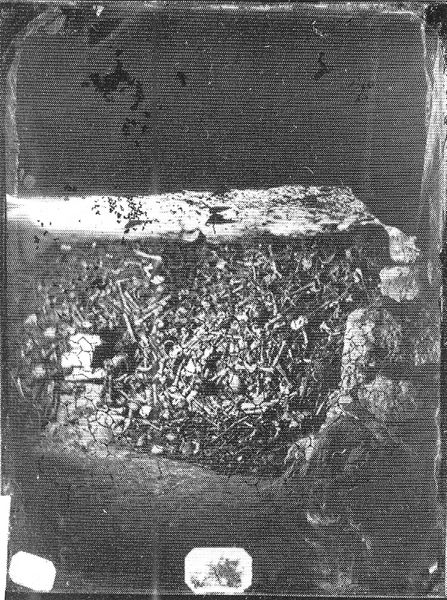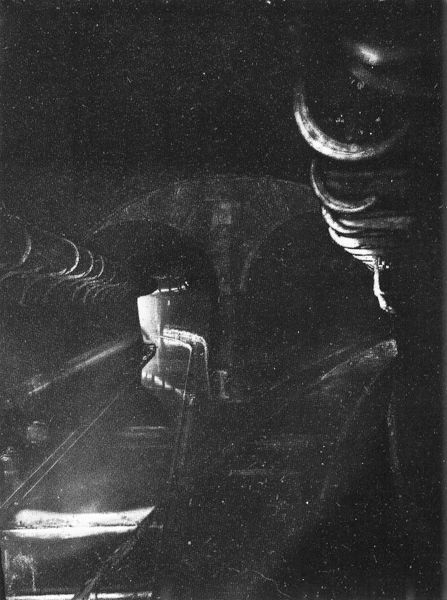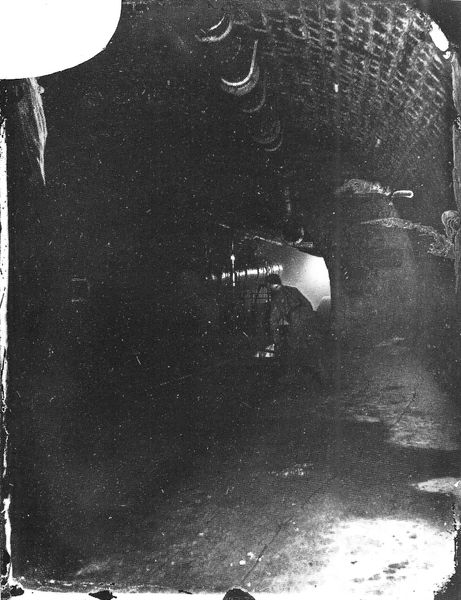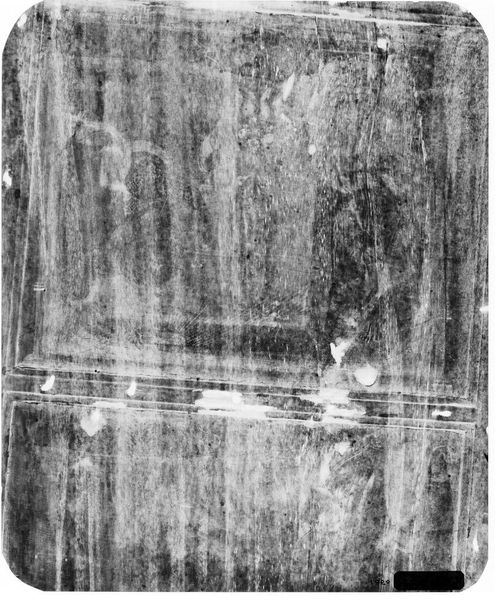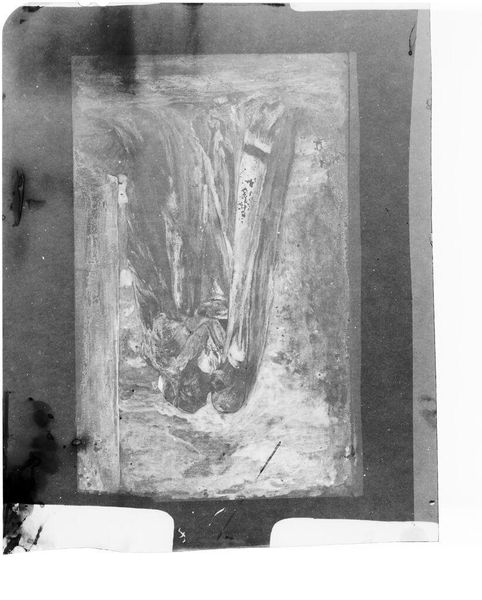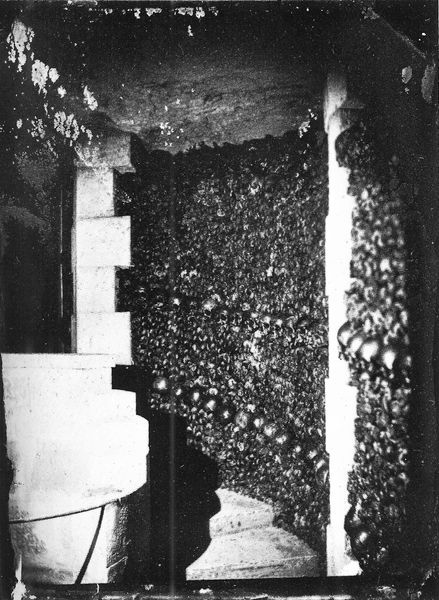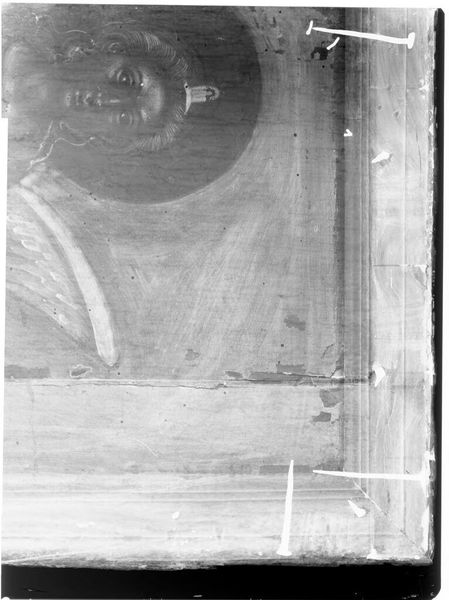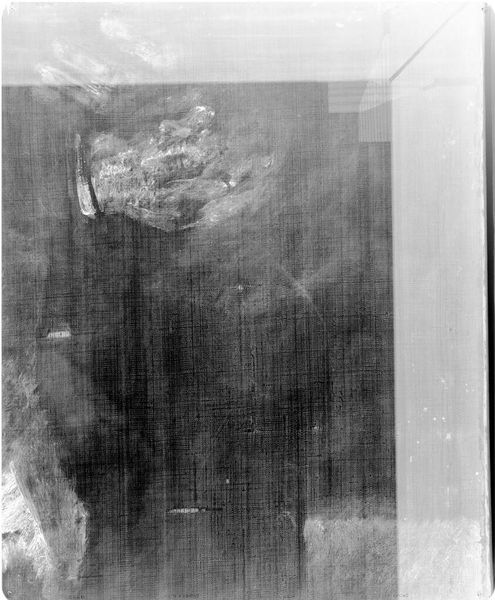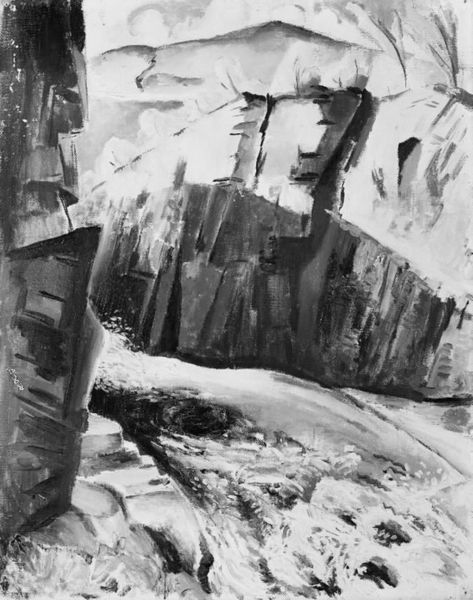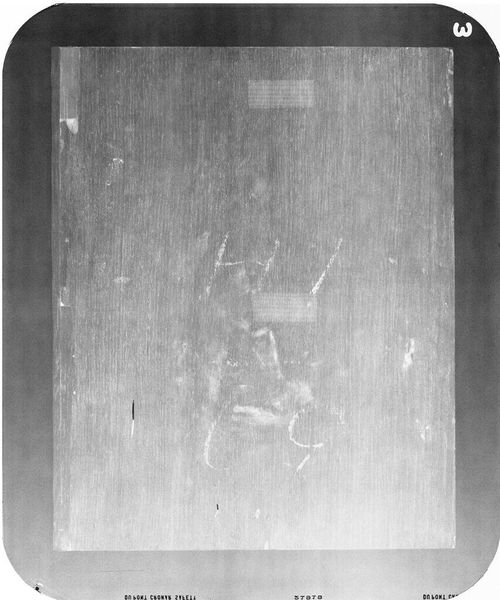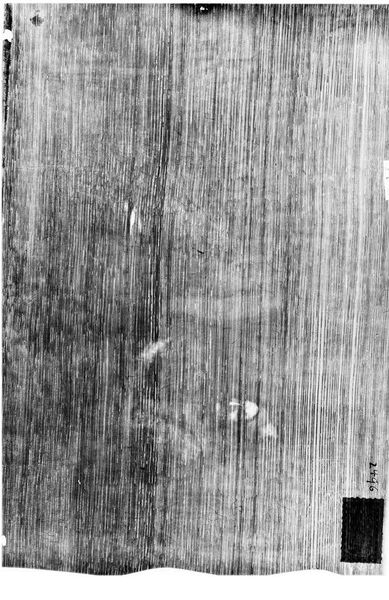
photography, gelatin-silver-print
#
black and white photography
#
landscape
#
photography
#
gelatin-silver-print
#
monochrome photography
#
history-painting
#
monochrome
#
monochrome
Copyright: Public domain
Editor: This is Félix Nadar’s "Catacombes de Paris," created around 1861. It’s a gelatin-silver print. It feels so raw, and almost…gritty. What strikes me most is the sheer density of skulls. How would you interpret this work? Curator: This photograph draws our attention to Nadar’s groundbreaking use of artificial light in this subterranean space. Consider the logistical labor: transporting equipment, ensuring consistent lighting within the catacombs themselves, the making of gelatin-silver print itself, with coating the glass plate, and then exposing, developing, and printing the image, to create this visual record. It’s also essential to recognize how the making and distribution of images like this potentially desensitized 19th century society towards mortality, in addition to providing documentary material about what were once human remains, re-presented in stacks that are almost architectural. Editor: So you’re saying that the photographic process itself, and the act of recording the Catacombs, is a significant part of the artwork's meaning? How does the use of photography as a medium affect its social meaning? Curator: Absolutely! The relatively new technology democratized visual representation of what was an inaccessible location; in turn, transforming these human remains into objects of visual consumption. These were formerly people who, now photographed, can be treated almost like commodities. We must ask, how might such an act potentially transform perception? Editor: That’s a really fascinating point – the commodification of human remains through photography. It highlights how technological advancements can profoundly influence our understanding of history and mortality. Curator: Precisely. By thinking through the material conditions of its creation, the role and materiality of photography, its labor and material, we get more insight into its place in history. Editor: I never considered the impact of labor or consumption. Thanks, that shifted my view of Nadar's piece. Curator: You're welcome! Examining process always informs our understanding of visual and material culture.
Comments
No comments
Be the first to comment and join the conversation on the ultimate creative platform.
